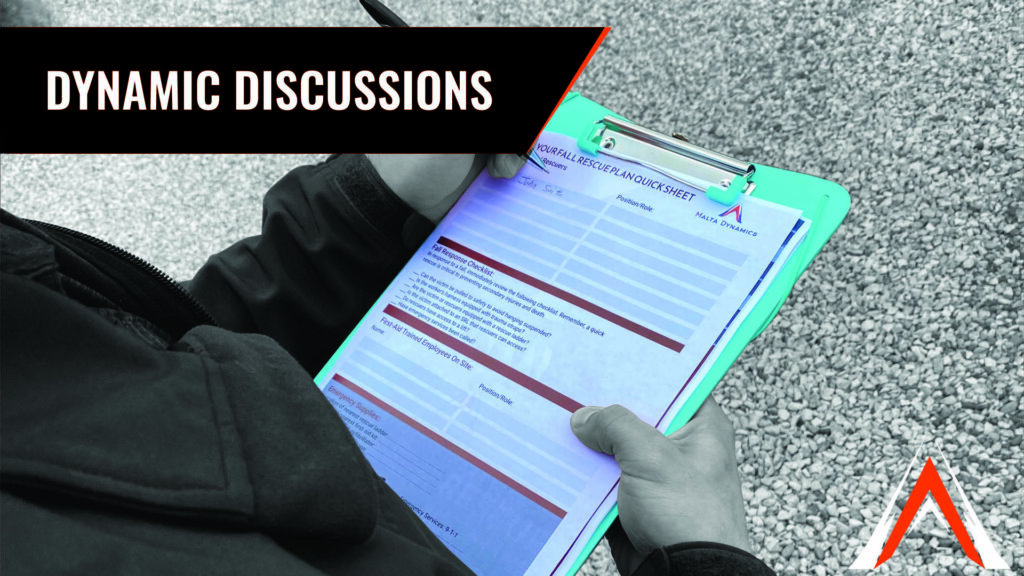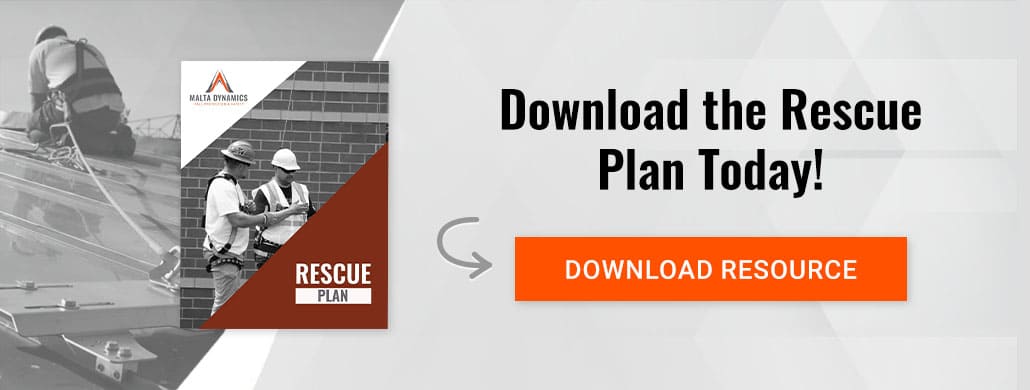Does OSHA Require A Fall Protection Rescue Plan?
A question that is often asked is, “does OSHA require a fall protection rescue plan?”. The simple answer to this question is: yes, you need a rescue plan because it’s safe and the Occupational Safety and Health Administration (OSHA) does require that you have one.
https://youtu.be/DDEsCcAA7WY
You need a plan of action for your team to follow in the event of an emergency. A rapid rescue plan is essential for preventing secondary injuries and even death that can occur in a fall incident. Creating a rescue plan arms workers with the knowledge and processes they need to follow in the event of an emergency to prevent injury or death.

OSHA Requires a Written Rescue Plan
The OSHA standard number for a fall protection rescue plan is 1926.502(d)(2). The OSHA website states that “an effective fallen worker rescue plan addresses the procedures, equipment, and personnel needed to ensure that a rescue proceeds quickly and efficiently when a fall occurs”. The standard also states that even when a Personal Fall Arrest System works properly, the fallen worker is still in danger. The worker’s body weight places pressure on the harness straps, which can compress the veins, and cause blood to pool in the lower extremities and reduce blood return to the worker’s heart. This condition is called suspension trauma, also known as harness hang syndrome. If the pressure is not reduced promptly, the worker can lose consciousness within minutes. OSHA emphasizes the importance of fall protection systems to prevent injuries and fatalities. While they do not explicitly require a separate rescue plan, it mandates that employers must have measures in place for prompt rescue of employees in case of a fall event.
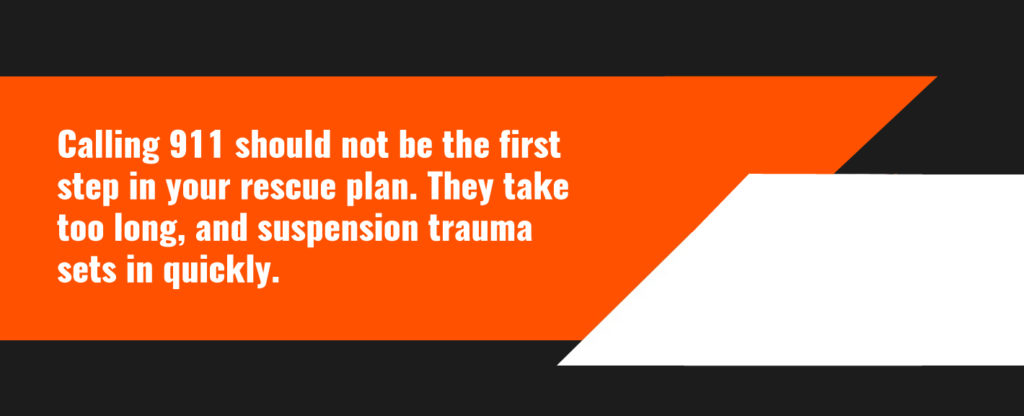
The Occupational Safety and Health Administration (OSHA) explains the following two rescue techniques. Self-rescue and aided rescue are two techniques for rescuing a suspended worker. Rescuing the worker promptly (i.e., aided rescue) or ensuring the worker can self-rescue is imperative to preventing injury or fatality.
Aided Rescue
A worker who is suspended from a lifeline and cannot perform a self-rescue will need help from trained rescuers using appropriate equipment, including appropriate fall protection. Off-site emergency response personnel may rescue suspended workers, although most 911 responders are not trained in how to do so.
Self-Rescue
With proper personal fall protection equipment, training, and practice, a fallen worker can take steps to minimize suspension trauma. Self-rescue methods allow a fallen worker to temporarily relieve pressure on the legs or in some cases to even lower himself or herself to the lower level.
Most companies provide a plan for aided rescue. Although there are devices available for self-rescue, it’s difficult to have workers at height with only a self-rescue option. There could be injury during the fall that would prevent a fallen worker from performing a self-rescue. There also could be swing fall hazards and best practices are generally for a worker to have aided rescue.
Since OSHA requires that your company have a written rescue plan, you will need to make sure that it is prompt. You must have your employees trained on this rescue plan as well. You will need to make sure your employees are trained on any equipment that is being used.
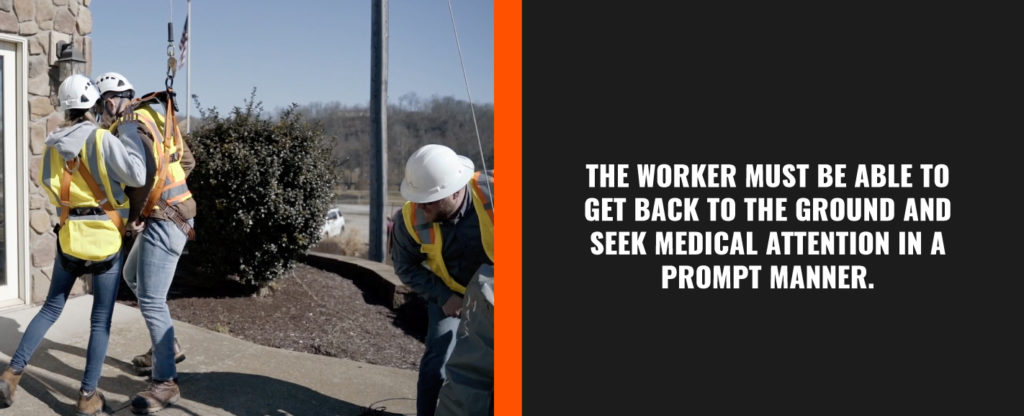
For instance, in the event of a fall incident, it’s imperative to avoid stating that emergency response services, such as the fire department, will arrive in 45 minutes to an hour. This prolonged wait time could result in the individual remaining suspended for an extended period, potentially leading to irreversible injuries or even fatality.
The opinions vary but no one certainly wants to be suspended in the air after a fall for that length of time. Certain things can happen on the way down from a fall even with the best gear. The reality is that you can have injuries on the way down from a fall and/or from the fall itself.
The hierarchies of where an employee should be and “fall arrest” are third or fourth down on the list. The hazard should definitely be taken out before exploring the option of having a fall and having it arrested. There aren’t hazards in every situation but there were in this example.
So, for your plan to be complete, you need to have a rescue involved. Wearing safety gear and experiencing a fall is not enough. The worker must be able to get back to the ground and seek medical attention. That’s why OSHA puts it in a language that allows the employer to determine what it is. You do have to have one ready; your employees should know it and it should be part of your training.
Importance of a Fall Protection Rescue Plan
A fall protection rescue plan plays a crucial role in ensuring the safety and well-being of workers. In the event of a fall, every moment counts, and having a well-thought-out plan can mean the difference between life and death. This plan should encompass various elements, including the deployment of safety nets, fall protection harnesses, and other appropriate fall protection systems.
Collaboration with Local Emergency Services
In occupational safety, especially when it comes to working at heights, partnering with local emergency services like fire departments and paramedic teams is crucial. Employers are responsible for fall protection and rescue plans, but complex or high-risk rescues may need the specialized skills and equipment of emergency professionals. Collaborating through pre-incident planning and joint training helps both employers and emergency responders prepare for specific site hazards and streamline rescue operations. Regularly sharing information on site risks, access points, and layout with emergency services can make rescues quicker and safer, reducing risks for workers and responders alike.
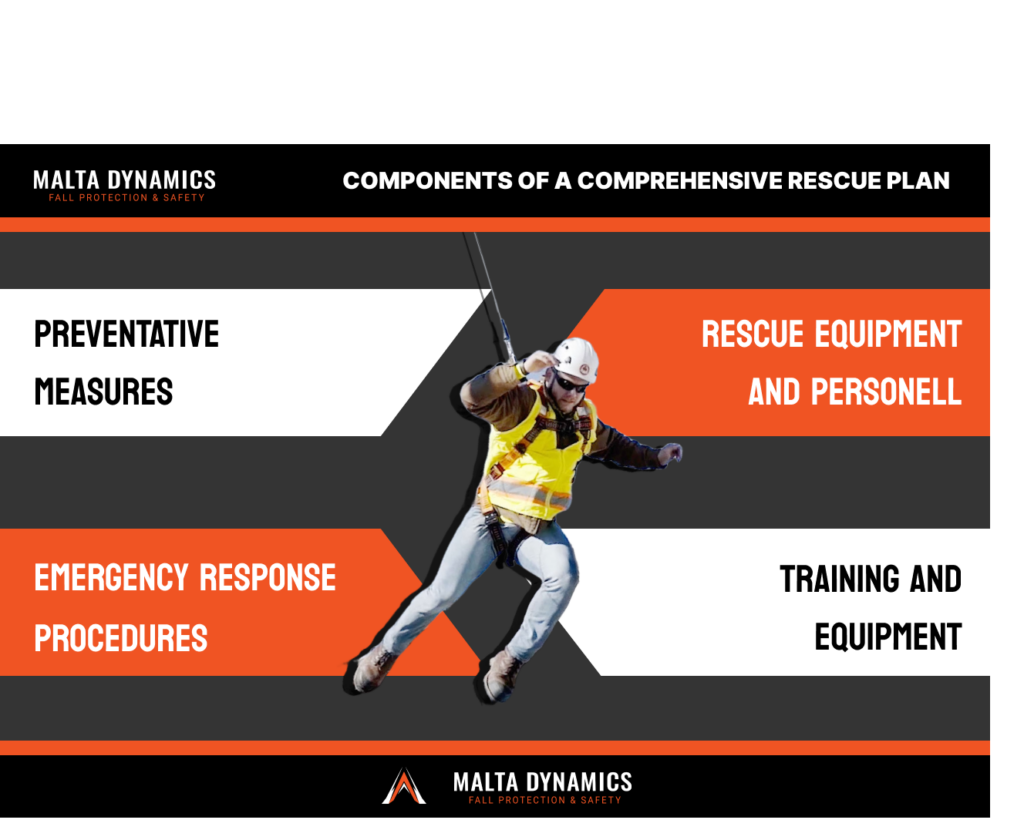
Components of a Comprehensive Rescue Plan
A comprehensive fall protection rescue plan should address several key components. This plan is essential in ensuring the safety and well-being of workers at height and should encompass a multitude of critical components, each outlined to address the various scenarios and risks associated with working in elevated environments. This plan fall protection rescue plan should include:
Preventive Measures
Implementing robust fall protection systems, including safety harnesses, self-retracting lifelines, and safety nets, can significantly reduce the risk of falls.
Emergency Response Procedures
Clearly outlined procedures for notifying emergency services, activating rescue teams, and initiating post-fall rescue operations are essential.
Training and Equipment
Providing employees with adequate training on fall prevention, rescue procedures, and the proper use of personal protective equipment (PPE) such as body harnesses and aerial lifts ensure preparedness in the event of an emergency.
Rescue Equipment and Personnel
Equipping designated rescue teams with the right equipment, such as aerial lifts and self-retracting lifelines, and ensuring they are trained to perform rescue operations safely and efficiently.

How To Create A Fall Rescue Plan
Malta Dynamics provides a free fall protection rescue plan template, found here. This fully customizable plan offers fall rescue awareness resources for your team as well as instructions for reporting fall incidents to OSHA. You’ll find a rescue plan quick sheet that includes emergency contacts and a detailed checklist you can use to prepare for a quick response to a fall incident.
Along with a fall protection rescue plan, there must be a fall protection plan. Falls are among the leading causes of workplace injury and death each year. With more than 7,700 cases in 2018 alone, OSHA consistently cites more companies for fall protection violations than any other issue.
How can you keep your team safe and prevent expensive fines?
It all starts with a plan. Before every job, before work begins and before your workers strap on harnesses or safety equipment, you need to develop a fall protection plan.
Malta Dynamics is pleased to offer a downloadable Fall Protection Plan template for your convenience. This fully customizable plan offers fall protection awareness resources for your team as well as instructions for how to inspect your safety equipment.
A fall protection rescue plan goes hand in hand with a written fall protection plan. Any location in the workplace where fall hazards are present, a fall protection plan for each hazard is also required. The fall protection plan and the rescue plan are organized by the Competent Person on site. Any Authorized Person should also be trained and have access to both of these plans.
For more information on specific regulations please visit www.osha.gov .
Have a fall protection question?
Submit your question, and you could be featured on Dynamic Discussions!
